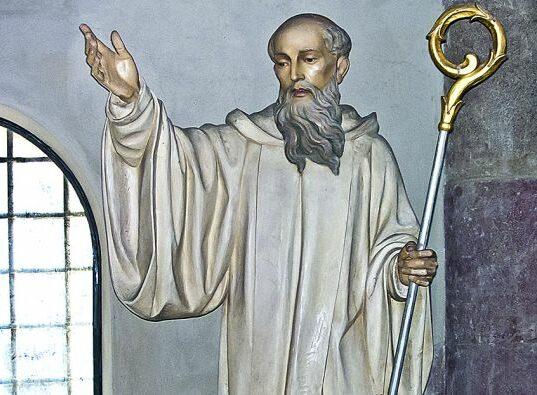On June 25, the Church celebrates the memory of St. William of Vercelli – also known as St. William the Abbot. He was the founding hermit of the Order of Montevergine.
Newsdesk (June 25, 2021, 15:05, Gaudium Press) St. William was born in the year 1085, in a town in Piedmont. His parents were noble and wealthy.
While still very young, determined to live for God, he made a pilgrimage to Santiago de Compostela. He then retired to a steep and high hill called Virgiliano to live there as a hermit.
Because of his noble status, his destiny was to have a life of war, court, government, and mobility. However, with his parent’s consent, he abandoned everything. St. William withdrew to a deserted and solitary place to glorify Our Lady.
To guarantee that he would not be bothered by anyone, he went to a high and cold mountain, where he intended to lead a life of penance.
But it is admirable to see how the souls that isolate themselves for the love of God end up having much more power of attraction.
Thus, as has happened so many times throughout Church history, communities are formed around hermits. This to the point that those who had left everything to live in isolation end up becoming cenobites, leading a communal life.
William rounded up his disciples and built a monastery and a church dedicated to Our Lady at the site. The shrine gave the mountain a new name: the Mount of the Virgin (Montevergine).
The strength of a saint
However, it was not long before something very tragic and painful happened to him. One day, the monks rose against William because of his generosity to the poor.
Although he was the father of the religious community, he was expelled from it by his own spiritual children, who were undoubtedly acting badly and not to his satisfaction.
Most of all, and even more grave, was the fact that they did not give Our Lady her due glory. St. William, in the eyes of his disciples, must have hindered them in the crooked life they had adopted.
Although they came to live on the mountain top to enjoy St. William’s company, they went so far as to expel him.
So the saint descends the road alone, leaning on a cane. As the door slams on his departure, a revolted monk shouts, “After all, we are alone and free from this overly strict man!”
St. William did not want the damnation of those monks. So, as he walked along the roads, he prayed for them. He asked Our Lady, under whose patronage the monastery was built, to drive out the demons who had entered there, thus encouraging the return of his disciples to the right path.
St. William, serene and praying, went down unknown paths until he reached a road that would lead him to Naples.
Welcomed by the King
Quietly and serenely, for some unknown reason, the saint headed for Naples.
It was not long before the King was informed of the presence of the saint. Once again, his life would transform: from being the Abbot; he became a pilgrim, now he would become the King’s advisor.
However, he continued praying with the same serenity, tranquility, and wisdom. He also advised the King, who held him in great esteem. As a result of the madness of some deranged monks, he was now in the King’s presence.
Amidst the splendor of the Naples court scene, with its beautiful tapestries, beautiful stained-glass windows, and magnificent granite constructions, one can imagine the King hurrying along. His eyes fixed on William, paying close attention to his advice. When, at a particular moment, a doubt aroused, he hastened to ask William’s opinion. Thus, that humble saint, who was dimmed and set aside, reigns through his influence over the sovereign.
However, longing stirs in William’s heart and makes him decide to visit his monks.
He forgave them like the Good Shepherd who loves his sheep. That, to the extent of searching for those who have gone astray. And even for those who rebelled against him, expelling him from their midst. He hovers over the convent like a kind of guardian angel so that it will not disappear.
So, after some time, he returns to visit the ungrateful monks. His prayers overcame the hardness of those hearts. He found them filled with devotion, living in great discipline and peace, due, it is supposed, to his untiring prayers.
Dying under the protection of Mary
Sometime later, he died on that hill where he had established his convent.
He died on June 25, 1142, in Guilhemeto. The Congregation called Mount of the Virgin no longer exists.
However, the monastery has not disappeared. It belongs to the reformation of Our Lady of Monte Cassino. The monks wear the white habit of St. William to remember their union with this great saint.
Biographical data do not tell of St. William’s death. What is certain is that, since he founded a convent dedicated to Our Lady, She protected him especially at the hour of his death.
Thus, we should not be concerned about how we are going to die, but we should only wish, at that moment, to be in the hands of the Blessed Virgin.
Plinio Corrêa de Oliveira
Text extracted, with adaptations, from a conference of June 25, 1976.































